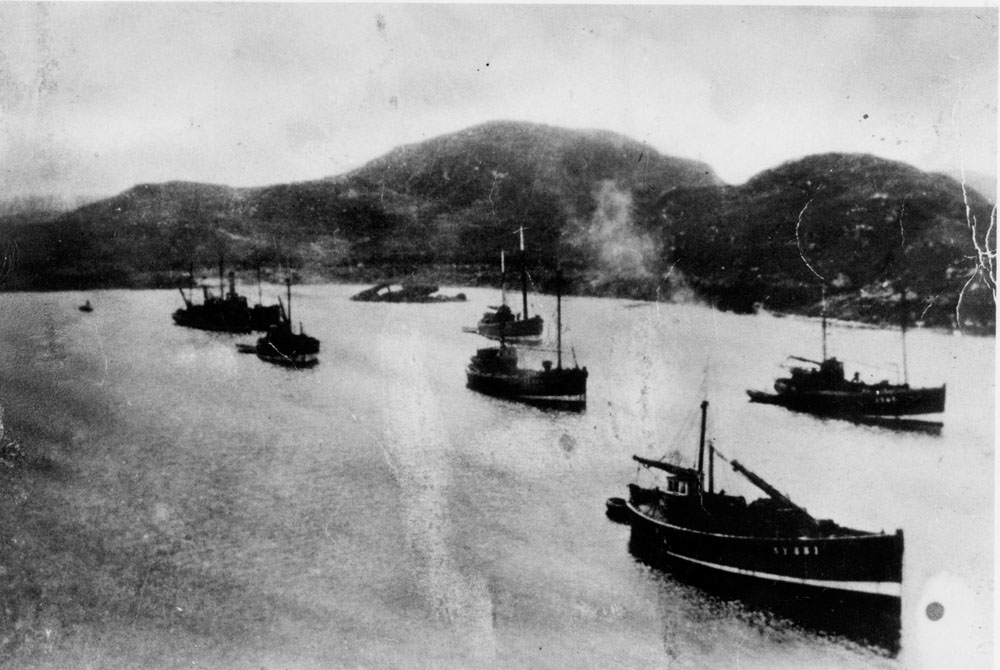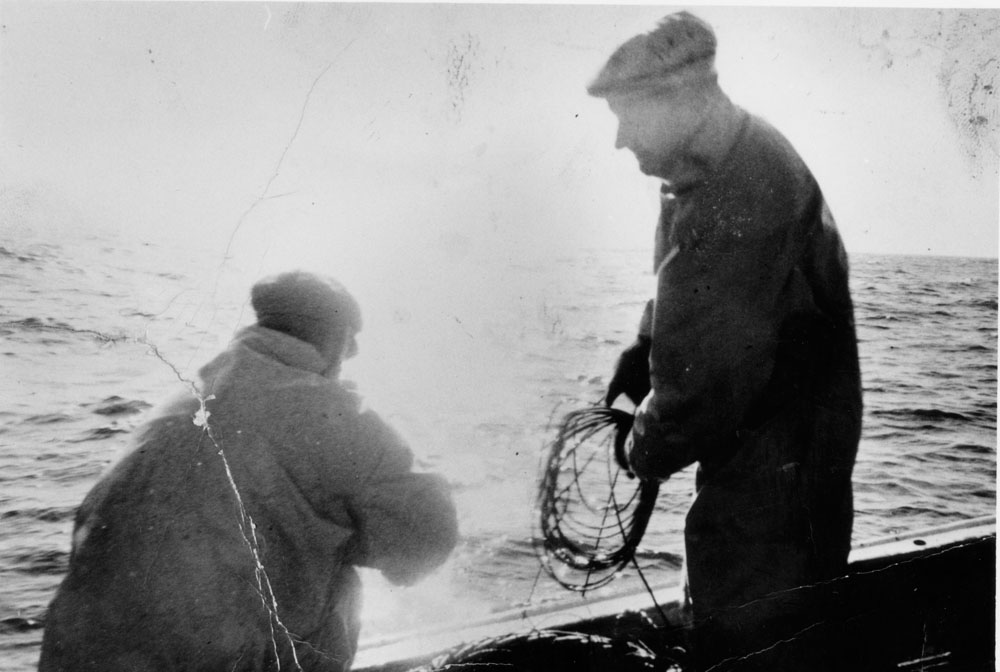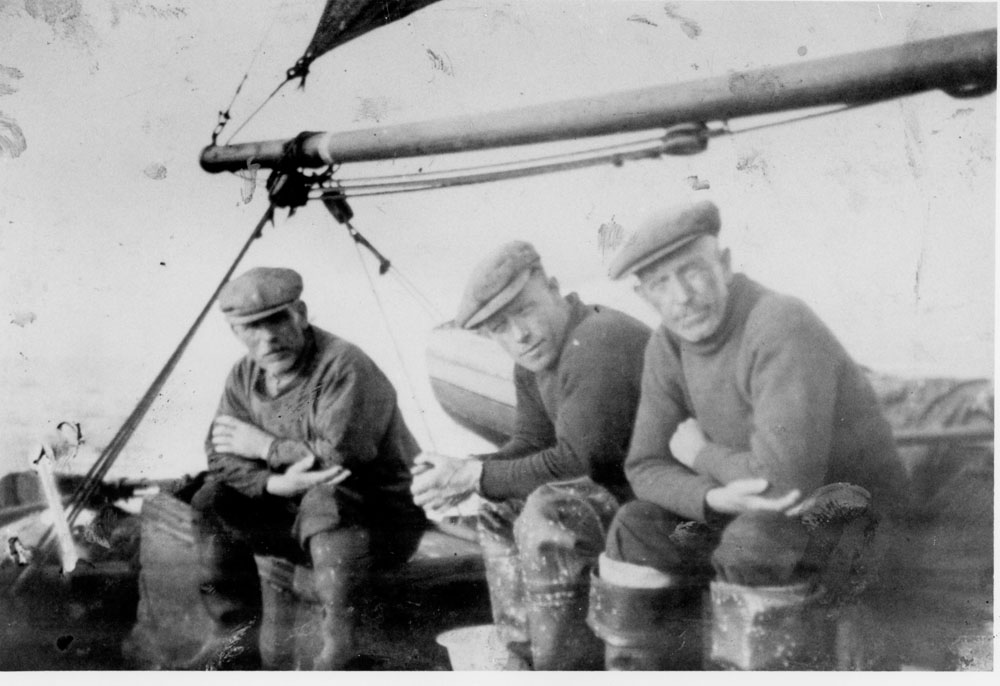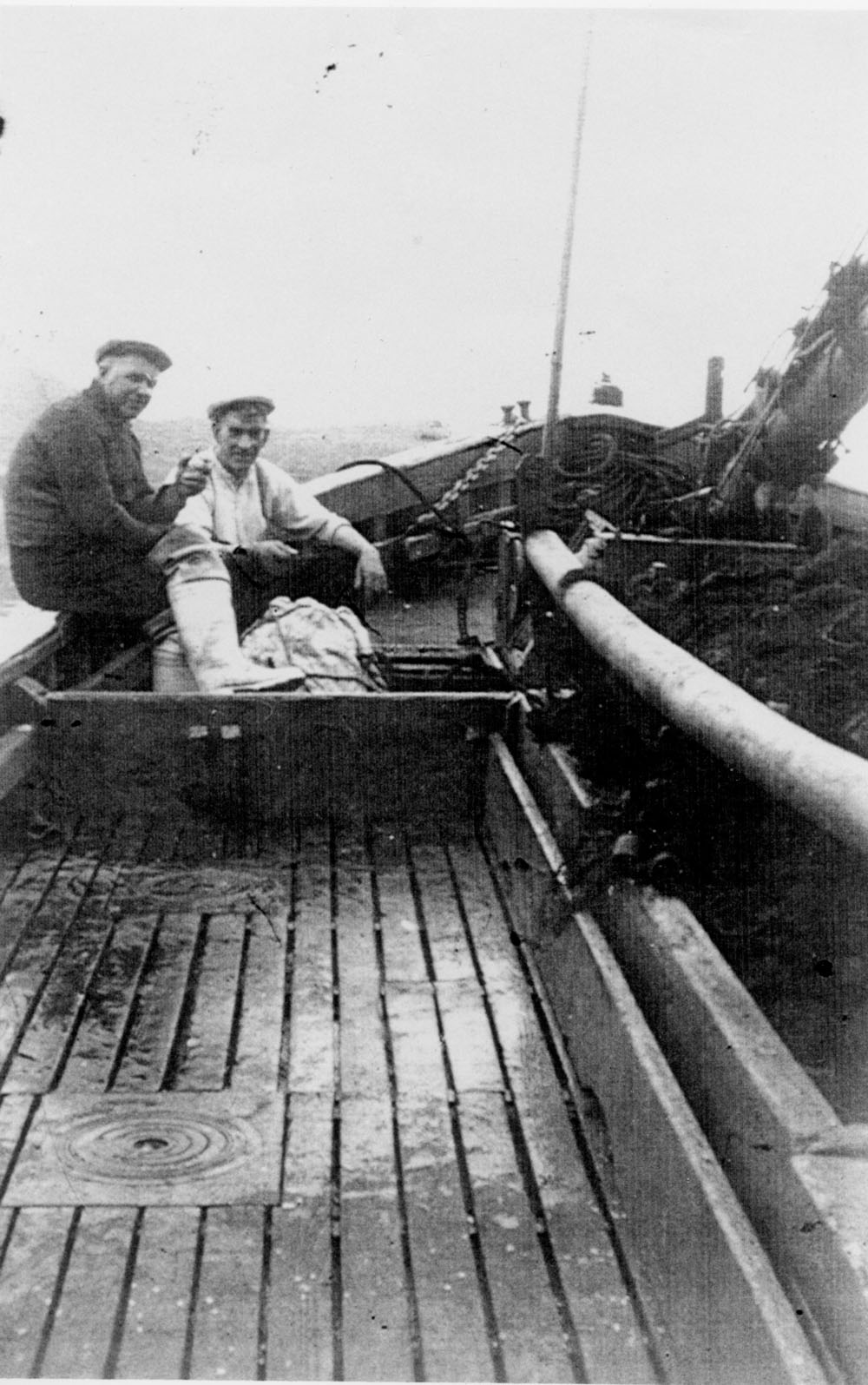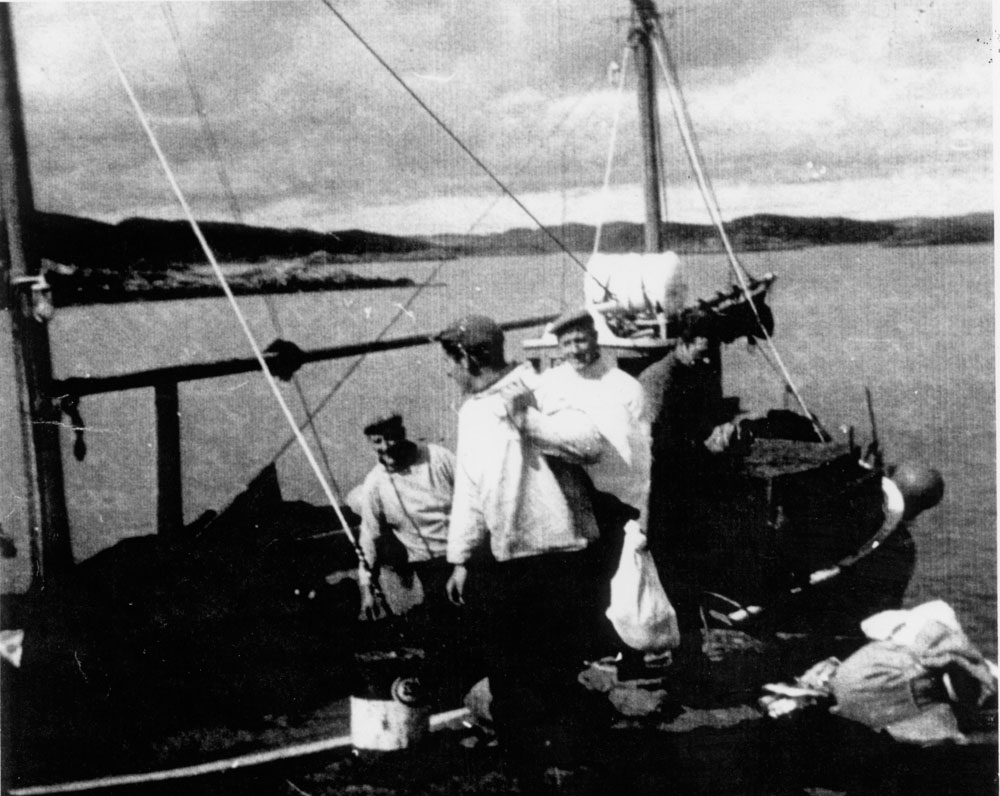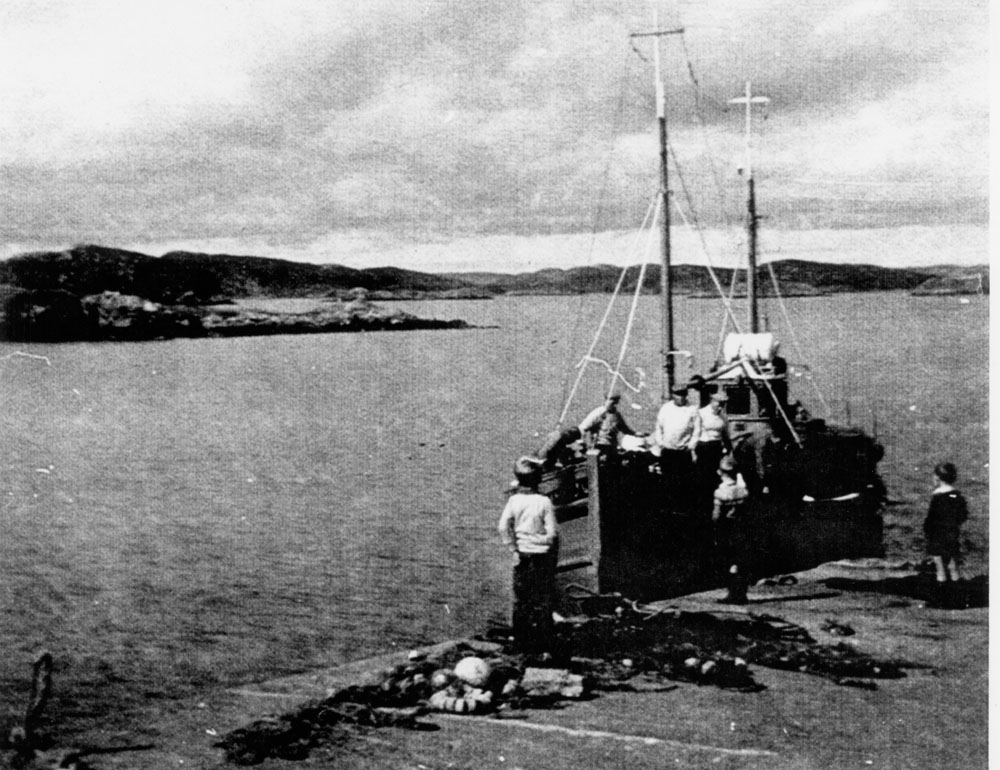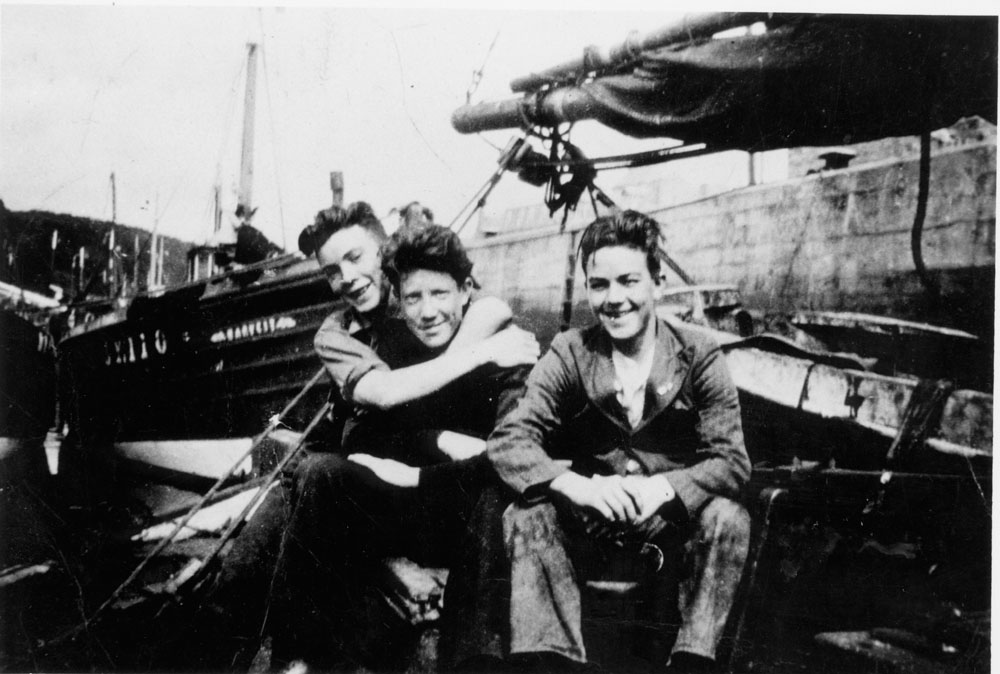Fishing at Cromore
by Angus “Ease” Macleod, Calbost and Marybank.
Fish was the staple diet of Cromore people and this made the sea of prime importance. Inland lochs were used for trapping fish and it is believed that Lochs Beag and Mor nam Bodach were used for this purpose. Both lochs have stone dams and at high-water flood-tides, the sea brought fish into the lochs where they were trapped when the tide ebbed. On the seaward side (east) of Loch nam Bodach Beag, there is a stone wall built across that acts as a fish trap – known as a carraidh. You can wade in this loch at low tide and catch fish quite easily.With the introduction of nets, sailing boats fished the fertile waters of Loch Erisort for all types of fish. Herring was the most plentiful and easy to catch. Due to this, a herring curing station and salt house was set up on the foreshore. The men folk did the fishing and the women the gutting, salting and barrelling. The remains of the curing house at Buale Fhairinish can still be identified above the foreshore where there is a large and level area now covered in grass.
The cairn in the Crossland Island was used as a marker for the sail boats tacking into the loch and the bay was used as an anchorage for boats waiting to discharge their catch. Local tradition suggests that the island originally had a cross mounted where the stone cairn is today and that it was thrown into the sea when the area moved away from the Catholic faith.
Cromore Bay itself is a very safe harbour with the encircling arms closing the bay off, except from the north at the mouth of the bay. Flat and white fish such as plaice, haddock and whiting were fished on small lines baited with mussels found in abundance on the shoreline. Cod, ling and eels were fished on great lines, salted and dried on the flat rocks on the shore. Marker cairns were built on other hilltops and islands to guide boats home and to act as markers for the fishing grounds.
Shipwrecks and drownings were sadly very common, bad weather and the numerous reefs on the coastline being the chief cause. Brothers’ Reef is named in memory of three local brothers after their boat was wrecked there and all drowned. This was one of the most dangerous, as it is covered from half to high tide. The brothers’ bodies were later recovered and are buried in the Temple graveyard. Between the 1st and 2nd World War, there were two trawlers and seven drift net fishing vessels operating out of Cromore.
Over the years, the following boats fished out of the village:
Safeguard, skipper Murchadh Dhomhnaill Ruaraidh, Murdo Macleod (Dick), 26 Cromore.
Thistle, Iain Beag Iain ‘an Oig, John Macleod, 24 Cromore.
Kilravock Castle, Seonaidh Ruadh, John Kennedy, 4 Cromore.
Cherry, Domhnall Alasdair Mhoir, Donald Macleod, 11 Cromore.
Spray, Fionnlagh Sheonaidh, Finlay Smith, 15 Cromore.
Aurora, Iain Mor Sheonaidh, John Smith, 16 Cromore.
Ebenezer, Murchadh Fhearghais, Murdo Macleod, 21Cromore.
True Love; Dochas; Columbine; Star of Hope; Cailleach; Oidche; Constant; Good Hope; Dove; Violet; Village Maid; Isa; Wood; Spray; Ripple; Willena. Posted by cepaircadmin | 0 comments
